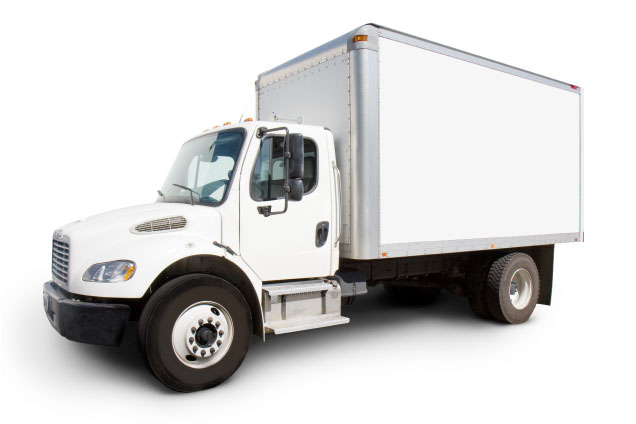Storing a Freezer Correctly for Long-Term Preservation
Posted on 21/05/2025
Storing a Freezer Correctly for Long-Term Preservation
When it comes to long-term food storage, ensuring your freezer is stored correctly is vital for both food safety and the longevity of your appliance. Many households and businesses rely on freezers to preserve meat, vegetables, prepared meals, and other perishables for months or even years. Yet, improper storage of the freezer itself can lead to spoilage, malfunctions, and wasted resources. In this comprehensive guide, you'll discover expert tips and best practices for preserving your freezer for the long run, maintaining efficient operation, and keeping food safely frozen for extended periods.
Why Proper Freezer Storage Matters
Ensuring your freezer is stored under the right conditions is critical for:
- Maintaining appliance efficiency and using less energy
- Preventing equipment breakdowns due to environmental factors
- Safeguarding food quality and minimizing spoilage risks
- Extending the lifespan of both the freezer and the food inside it
Long-term preservation is not just about what you place inside the freezer, but also how and where you store the freezer itself.

Choosing the Right Location for Long-Term Freezer Storage
Indoor vs. Outdoor Storage
While it may be tempting to store your freezer in a garage, basement, or even outdoors, the location plays a major role in its performance over time. Consider these tips:
- Indoor storage (such as a utility room or kitchen) is best for temperature control and appliance protection.
- If using a garage or basement, ensure the area is well-ventilated, dry, and not subject to extreme temperature fluctuations.
- Outdoor storage is not recommended for freezers due to exposure to weather, humidity, and critters, unless you have an appliance rated for outdoor use.
Ideal Environmental Conditions for Freezer Storage
The optimal environment for freezer long-term storage includes:
- Ambient temperatures between 50?F and 85?F (10?C and 29?C)
- Low humidity levels to prevent rust and mold (below 60% is ideal)
- Good ventilation around the appliance for efficient heat dissipation
- Stability - keep away from direct sunlight, heaters, or areas with frequent temperature swings
Storing a freezer in conditions outside these ranges can cause premature wear of components, reduce energy efficiency, and increase the risk of unwanted frost build-up or food safety hazards.
Preparing Your Freezer for Long-Term Storage
Clean Thoroughly Before Long-Term Storage
Before placing your freezer into long-term storage or filling it with food for extended preservation, thoroughly clean it to remove odors, bacteria, or residues that could contribute to mold growth or food contamination.
- Unplug the freezer and empty all contents.
- Wipe down interior surfaces with a mixture of baking soda and warm water (1 tablespoon of baking soda to 1 quart of water is effective).
- Dry the interior completely with a clean towel to prevent moisture buildup.
- Clean external surfaces and the door seal to remove dust and debris that could hinder the airtight closure.
Failing to clean your freezer prior to long-term storage greatly increases the risk of persistent odors and unsanitary conditions developing over time.
Defrost If Necessary
If your freezer is not frost-free, defrost it before long-term storage to ensure optimal energy efficiency and avoid ice damage:
- Unplug the appliance.
- Leave the door open to let all ice melt (place towels to absorb water).
- Wipe dry and inspect for residues or leaks.
Organizing and Loading Your Freezer for Prolonged Food Safety
Packaging Foods for Extended Preservation
When filling your freezer for long-term preservation, proper packaging is crucial to preventing freezer burn, moisture loss, and cross-contamination:
- Use air-tight containers or vacuum-sealed bags for all foods.
- Label each item with the date of freezing and contents.
- Avoid overloading - pack foods leaving a 1-2 inch gap at the top of containers for expansion.
- Arrange oldest items toward the front for easy rotation ("first in, first out" method).
- Keep meat, seafood, and poultry on a lower shelf or section to prevent drips onto other foods.
Allowing Air Flow & Efficient Cooling
- Don't pack the freezer too full - sufficient space must be left around items for air to circulate.
- Maintain a regular arrangement for easy access and inventory checks.
Tip: A full freezer is more energy-efficient than an empty one, but overpacking can block air and reduce performance.
Maintaining a Freezer in Long-Term Storage
Regular Power Supply Checks
Whether you're storing your freezer at home, in a rental property, or a remote site, uninterrupted power is vital for long-term food safety:
- Ensure the power outlet is rated for heavy-duty appliances.
- Protect the freezer with a surge protector or dedicated circuit to guard against outages or voltage fluctuations.
- Consider using a temperature alarm or WiFi-enabled monitor to alert you to power interruptions or unsafe temperature rises.
Defrosting and Cleaning Intervals
Even during long-term use, periodic maintenance is needed to prevent build-up and maintain food quality:
- For frost-free freezers, clean the interior every 6 months.
- For manual defrost models, defrost as needed - typically once or twice a year, or when ice thickness exceeds 1/4 inch.
- Check for expired or damaged packs and remove as necessary.
Check Door Seals and Gaskets for Airtight Closure
The door gasket is the freezer's frontline defense against warm air intrusion:
- Inspect seals regularly for cracks, warping, or loose spots.
- Clean gently with a damp cloth and check for food debris.
- Replace damaged gaskets promptly to preserve internal temperature and energy efficiency.
Troubleshooting Common Issues with Long-Term Freezer Storage
Unpleasant Odors
- Place an open box of baking soda inside to neutralize smells.
- Regular cleaning and prompt removal of spoiled foods will prevent most odor issues.
Excessive Frost Build-Up
- Check door seals for leakage.
- Avoid leaving the door open for prolonged periods.
- If frost builds up quickly, defrost the unit and check internal temperature settings.
Food Not Remaining Fully Frozen
- Confirm freezer thermostat is set between 0?F to -10?F (-18?C to -23?C) for long-term food safety.
- Check for frequent power losses or faulty electrical connections.
- Ensure the freezer is not exposed to direct heat or sunlight raising internal temperature.
Noise and Motor Issues
- Keep ventilation space clear around sides and back.
- Clean condenser coils yearly to remove dust buildup.
- If motor or fan noise persists, schedule a professional inspection to prevent breakdown.
How to Store a Freezer for Long-Term Preservation (When Not in Use)
If you need to store a freezer long-term with no intention of use for months (such as during a move or seasonal closure), follow these steps:
- Unplug and defrost fully (never leave standing water or ice inside).
- Clean thoroughly with mild detergent and baking soda solution.
- Allow to air dry for 24-48 hours with the door open (this prevents any chance of mold growth).
- Pro-tip: Place charcoal, silica gel, or crumpled newspaper inside to absorb residual moisture and odors.
- Prop the door open slightly using a towel or block to promote ventilation.
- Cover the freezer loosely with a breathable cloth or tarp (never seal with plastic, as this can trap condensation).
- Store upright on a level surface in a cool, dry place.
Never store a freezer outdoors or in damp environments, even temporarily, as moisture and pests can cause irreversible damage.
Energy Efficiency and Cost Savings During Long-Term Freezer Storage
Running a freezer correctly for long-term preservation doesn't have to mean high energy bills or excessive maintenance. Smart strategies include:
- Filling empty spaces with bottles of water to help the freezer maintain temperature and run efficiently.
- Setting the thermostat correctly - colder than necessary temperatures can waste energy without improving food safety.
- Cleaning condensation coils and vents regularly to allow efficient heat exchange.
- Investing in an Energy Star-rated freezer for long-term savings and environmental benefit.
- Keeping an inventory to avoid unnecessary door opening and searching for items.
Tip: Use smart plugs or monitoring devices to track real-time energy use and get alerts about temperature fluctuations or unauthorized access while the freezer is in long-term operation.
Safety Considerations for Long-Term Freezer Storage
Preventing Mold and Bacteria
- Ensure the interior is always dry before storage, especially when the freezer is unplugged.
- Keep the door ajar and use desiccants if the freezer is not running.
- Maintain consistent cold temperatures while actively using the freezer to inhibit microbial growth.
Rodents and Pest Prevention
- Check the storage area for signs of pests before installing the freezer.
- Avoid storing food scraps or debris nearby that could attract animals.
- Seal any gaps around walls or floor to keep pests from nesting beneath or behind the appliance.

FAQs: Storing a Freezer for Long-Term Preservation
1. How long can food safely remain frozen in a well-maintained freezer?
Most foods remain safe indefinitely at 0?F (-18?C), but quality can decline after 6-12 months for most meats and vegetables. Vacuum-sealed packaging and steady temperatures are key for maximum longevity.
2. Should I unplug my freezer when storing it long-term while empty?
Yes. If the freezer is empty, unplug it, clean it thoroughly, allow it to dry, and leave the door slightly open to prevent mold and odors during periods of non-use.
3. How do I keep my freezer smelling fresh during long-term storage?
Regularly clean, use baking soda or charcoal inside, and avoid moisture buildup. If the freezer is actively running and storing food, keep inventory rotated and promptly remove expired items.
4. What's the best way to move and store a freezer for a long time?
Transport upright if possible, avoid tipping to prevent compressor oil movement, secure the door shut, and use blankets or padding against scratches. At the new location, let it sit upright for a minimum of 4 hours before plugging in to allow fluids to settle.
Conclusion: Achieving Reliable Long-Term Freezer Preservation
When it comes to storing your freezer for long-term preservation, attention to location, cleanliness, maintenance, and environmental control are essential for both food safety and appliance longevity. Whether your goal is to safeguard a backup food supply, preserve garden harvests, or store a freezer in an unused state, these best practices can help you achieve consistent results and peace of mind.
In summary, a well-maintained and correctly stored freezer is one of the most valuable tools for long-term food preservation, cost savings, and reliable household or commercial storage. Invest the time and care today for lasting, trouble-free performance tomorrow!





